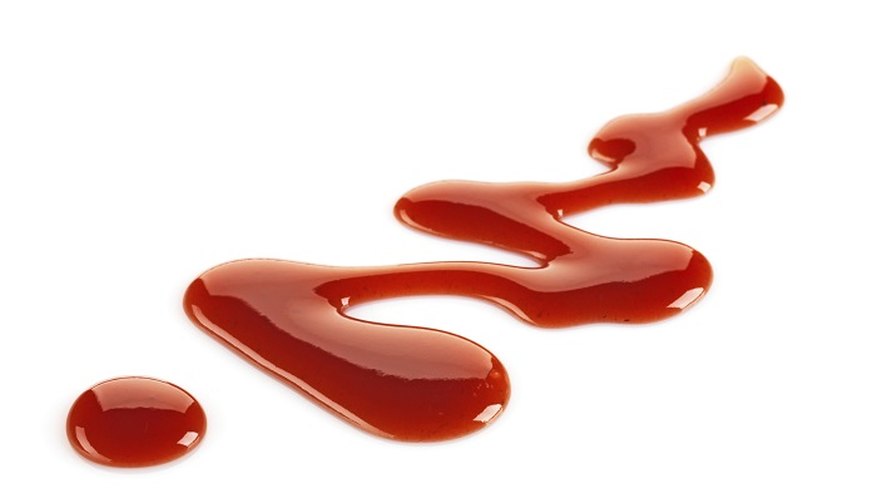Arrowroot comes from a starchy plant. Like other cooking starches, it thickens sauces and enhances texture. While acidic ingredients denature other starches, spoiling their ability to thicken a sauce, arrowroot withstands acids and retains its thickening power. The high acidity of tart fruit juices does not affect arrowroot, making it the preferred thickening agent for these tangy sauces. Arrowroot also stays clear in sauces, leaving gels and glazes glossy and translucent instead of cloudy.
- Arrowroot comes from a starchy plant.
- While acidic ingredients denature other starches, spoiling their ability to thicken a sauce, arrowroot withstands acids and retains its thickening power.
Bring fruit juice or pureed fruit mixed with an equal volume of water to a simmer over a low heat. Add sugar to taste if desired; orange juice probably will not need sweetening, while bitter lemon juice benefits from sweetening.
Cook the mixture over low heat until it reduces in volume, stirring frequently. Reduce the sauce by a quarter for a milder flavour or by a half for a more intense taste. Reducing a sauce removes the water from it and concentrates its flavour, so sample the sauce until it tastes right for its intended use.
Pour the hot liquid fruit or juice into a heat-resistant measuring cup and note its volume. Return the liquid to the saucepan, but remove the pan from heat. The residual heat it holds will thicken arrowroot well as the starch congeals readily at warm temperatures.
- Cook the mixture over low heat until it reduces in volume, stirring frequently.
- Return the liquid to the saucepan, but remove the pan from heat.
Place 15 ml (1 tbsp) of arrowroot powder per 250 ml (1 cup) of liquid in the empty measuring cup. For 500 ml (2 cups) of liquid, for example, use 30 ml (2 tbsp) of arrowroot. Mixing the arrowroot slurry in the measuring cup prevents having to dirty another dish and preserves the residual fruit sauce that stayed in the cup after transferring the sauce back to the saucepan.
Add an equal volume of water to the powdered arrowroot in the measuring cup and stir until the mixture forms a smooth, translucent slurry. Err on the side of adding too much water rather than too little; it is easier to allow excess water to evaporate from a sauce than it is to smooth lumps of thickener out of it.
Stir the arrowroot and water mixture into the hot fruit sauce and return the saucepan to the low heat. The sauce should thicken quickly. Cook the sauce for 30 seconds to a minute to remove any starchy flavour and to incorporate the arrowroot thoroughly.
- Add an equal volume of water to the powdered arrowroot in the measuring cup and stir until the mixture forms a smooth, translucent slurry.
- Cook the sauce for 30 seconds to a minute to remove any starchy flavour and to incorporate the arrowroot thoroughly.
Serve the sauce warm or chilled on top of ice cream, pancakes or sponge cake. The sauce also makes a tasty and attractive glaze or dip for fresh fruit.
TIP
Arrowroot contains no fat and 10 calories per 5 ml (1 tsp), making it suitable for calorie-restricted and low-fat diets.
This starch holds its shape well over time, so preparing arrowroot-based fruit sauces in advance of a party or dinner will not affect them adversely at serving time.
WARNING
Arrowroot powder loses its thickening power if overcooked, so refrain from bringing it to a rolling boil or cooking it for longer than a minute or two.
Mixing arrowroot powder into dairy-based sauces can impart an unpleasant slimy texture to them; use cornstarch or flour to thicken dairy instead.
Manufacturers that sell arrowroot powder as a thickener may mix it with cassava starch.
